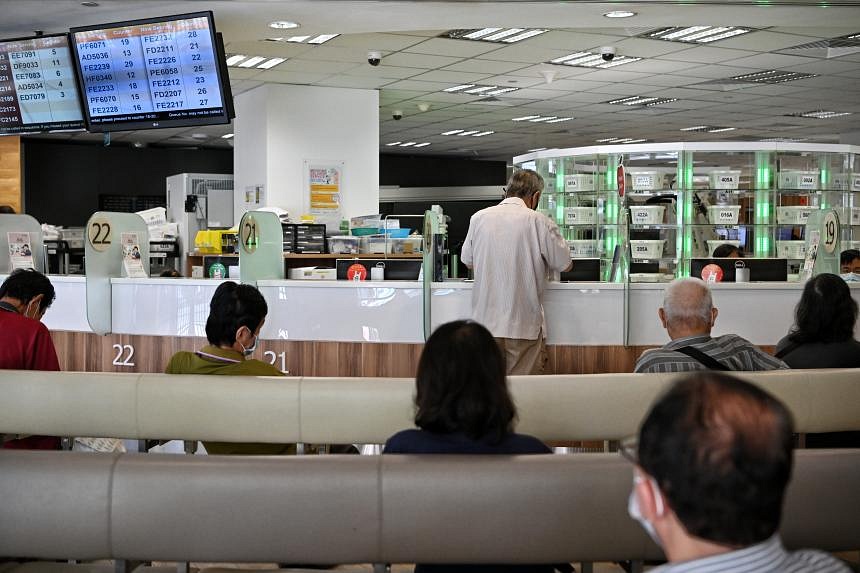Is Singapore’s healthcare primed for a bigger, older population?
Singaporeans are living longer, but there are challenges such as a lack of healthcare workers to take care of seniors.

Singapore was named the sixth Blue Zone in the world in the Netflix series Live to 100: Secrets of the Blue Zones. This means it is a city with one of the highest life expectancies across the globe.
The other five zones are in places like Okinawa, Japan, where people live long lives due to a plant-based diet and a culture embodying a relaxed, holistic approach to living. High-achieving Singapore is not like that, but won its place in the longevity list due to policies that encourage and enable healthier behaviours that lead to longer lives.
By 2026, more than 20 per cent of the population will be aged 65 and above. According to SingStat, the life expectancy of Singapore citizens and permanent residents at birth is 83.
The challenge now is to stay in the “zone” amid shortages worldwide in healthcare staff to take care of the aged. The World Health Organization (WHO) estimates that by 2035, there will be a global deficit of 12.9 million skilled healthcare professionals.
Singapore, in particular, has a limited pool of healthcare workers. During a Parliament session in October 2022, Minister for Health Ong Ye Kung said an estimated 24,000 people are needed to grow the current 58,000 healthcare personnel to 82,000 by 2030.
A big part of Singapore’s healthcare, especially senior care, depends on foreign workers. Seventy per cent of direct workers in the long-term care sector are foreigners, according to a 2018 poll by the Lien Foundation. These include nurses, therapists, nursing aides and healthcare assistants. In a 2022 survey by SingHealth Polyclinics, nearly half of foreign domestic workers hired as caregivers to the elderly with chronic diseases lacked the confidence to support the needs of those they cared for.
The reliance on foreign workers is troubling, not just because of concerns with their level of skill and knowledge, but because they come from countries which are also ageing. Eventually, we will be squeezed out of this resource.
The key to addressing this problem is to embrace new models of eldercare, while making healthcare an attractive career option.
This is backed up by the latest Apac (Asia-Pacific) Future Health Index Report 2023, which highlighted that adopting new models is key to improving efficiency and creating sustainable care systems. A total of 66 per cent of healthcare leaders and younger healthcare professionals believe that new care delivery models enable them to be more efficient. This involves investing in digital health records, telehealth and artificial intelligence.
Singapore is ahead of most in unlocking the power of technology, and building a more connected and engaged workforce. However, more investment in staff and understanding their needs is also needed. Even as we embrace technology, the human touch is also necessary.
The benefits of telehealth, for instance, are tremendous but no substitute for human connection. Telehealth allows the care professional to seamlessly enter the homes of older patients. Patients do not need to travel and queue for an appointment. Informal carers do not need to apply for leave to accompany their loved ones to hospital appointments and will feel less burnt out.
However, despite the convenience, most patients still prefer to confide in care professionals face to face when it comes to personal health topics, or for physical examinations. On the other hand, doctors can detect nuances and cues from the patients’ expressions and body language during the physical session. Technology can aid human carers, not replace them, and the new care models need to continue to attract people to be part of this.
On track with tech
When it comes to healthcare, Singapore is already making good use of artificial intelligence (AI), robots and automation.
It is no longer surprising to see robots moving around hospitals to assist care workers. For example, Singapore General Hospital deploys robot helpers to talk to patients during consultation sessions. In Tan Tock Seng Hospital, a smart ward team is in place to address the looming manpower crunch for elderly patients. Its digital system detects whenever a patient gets up from the hospital bed and alerts the carer, to avoid risk of a fall. Elderly patients are also equipped with hands-free wearable devices which provide real-time information to off-site doctors about their condition. Such uses of technology relieve care workers from repetitive tasks and make them more productive.
But we still have much to learn from other countries like Japan where the robotics and AI industries are serving up new solutions that extend to the social sphere.
For example, social robots called Lovots provide much delight to older people and family members. These robots are cute and fun. They have paved the way for other kinds of robots designed to create a human-machine relationship via chatting, hugging and playing games.
Another area offering benefits for healthcare of seniors is digitalised health records, enabling AI to collect data quickly, interpret the information with higher accuracy and respond to the needs in real-time.
Complex issues can also be handled through AI.
In the field of predictive analysis, patients can benefit from more personalised and accurate prognosis of their conditions. NUH recently launched Prescience, a national supercomputer system which predicts patient outcomes based on the records of a quarter of a million patients suffering from stroke and diabetes.
Using AI to inform patients and enable access to resources helps empower individuals to take responsibility for their health by making more sense out of data collected about them.
However, technology only complements the work healthcare workers do. It is, therefore, vital that there’s a continued drive to incentivise them in their chosen career.
Making healthcare an attractive career
Challenges in attracting good candidates include a long hiring process, low wages compared with other sectors, burnout from gruelling working hours and the demands of patients. As a result, the turnover is high and foreign workers are constantly attracted by better incentives offered by other countries.
Seventy-five per cent of healthcare leaders in Singapore place staff satisfaction and retention at the top of their priority list, according to Philips Future Health Index 2023 which shows how countries globally are shaping the future of healthcare.
Between 2021 and 2022, nurses and social workers saw increases of 5 per cent to 14 per cent on their base salaries. This recognises their contributions and will attract new talent.
However, there needs to be more fundamental change in redesigning roles, such as using technology to reduce rote work and improving shift-work scheduling. This will improve staff morale and retention. Workers will experience better work-life balance and achieve higher job satisfaction. This will attract more talent, boosting the eldercare sector.
Another challenge is overcoming health workers’ anxiety about embracing technology.
Digital transformation is necessary to cope with the ageing population. Institutes of higher learning (IHLs) play a critical role in developing new mindsets and upskilling. Tertiary institutions must provide training to produce workers with multi-disciplinary talents for the health and care sectors, and include life-long learning to help them stay relevant.
IHLs can also play a role in closing the gap between the health and social sectors. At the Integrated Care Learning Symposium on Oct 30, the Singapore University of Social Sciences signed agreements with seven key partners from the healthcare and social sectors to ramp up capability-building and develop talent across areas of integrated care. New talent and applied research will go a long way in addressing the challenges of an ageing population.
Care in the community
The Government is building a robust eldercare infrastructure, from hospitals to community hospitals, active ageing centres and homes. It is a new journey and requires workers to undergo training and adopt best practices.
But beyond manpower and technological advancements, building a conducive environment and community are just as important in helping seniors age well.
Take Japan: Its concept of a community-based integrated care system consists of five essential elements: housing, medical care, long-term care, preventive care and daily living support.
Singapore has community care apartments providing elder-friendly housing that offers different care options, and supports independent ageing in place within the community. We also have silver zones – residential areas with lower speed limits; assisted living and independent living facilities; and community programmes. Intergenerational participation in these programmes should be encouraged to remove any misperception these are just “kampungs” for old folk.
Over the years, the Infocomm Media Development Authority has recruited more than 1,000 digital ambassadors to support over 210,000 older people. The ambassadors help seniors to use their digital devices – from e-payment to booking transport.
These are laudable achievements, but healthcare leaders have to invest in their workers. The profession is more than a job. Caring for older folk can be extremely demanding.
To maintain Singapore’s longevity achievement as recognised by its Blue Zone status, health and care providers, corporates, educational institutions and government agencies are key actors. With the right investments in human capital and more widespread adoption of healthcare technology, we can keep growing our healthier, long-living nation of people.
- Dr Kelvin Tan is head of the Minor in Applied Ageing Studies programme at the Singapore University of Social Sciences.
Join ST's Telegram channel and get the latest breaking news delivered to you.









No comments:
Post a Comment